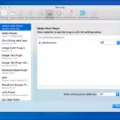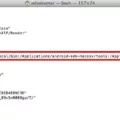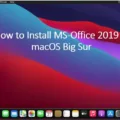Installing the Java Development Kit (JDK) on a Mac is an important part of developing software in Java. The JDK includes the necessary tools and libraries to compile, debug and run Java applications. In this blog post, we’ll walk you through the steps of installing the JDK on your Mac computer.
First, visit the Oracle website and download the latest version of the JDK for your Mac. Once the download is complete, open the disk image file and double-click on the .pkg file inside it to begin installation. You will be asked to confirm that you want to install the JDK on your computer; click “Continue” to proceed with installation.
Next, a window will appear asking you to read and agree to the Oracle license agreement. Read through it carefully before clicking “Agree”. After agreeing to the license agreement, you will be asked where you want to install the JDK; you can choose either a default directory or specify a custom one for installation. Click “Install” once you have chosen where you wuld like to install it.
Once installation is complete, open up your terminal window and type “java -version” in order to check that Java is installed correctly on your system. If everything is successful, you shold see a message similar to: java version “1.8.0_77”
Congratulations! You have now successfully installed JDK on your Mac computer! To further develop software in Java, make sure that both JRE (Java Runtime Environment) and JVM (Java Virtual Machine) are also installed correctly alongside JDK before proceeding with development tasks such as compilation and debugging of applications.
Installing JDK Manually on Mac
Manually installing the JDK (Java Development Kit) on Mac is a relatively simple process. First, you need to download the JDK .dmg file from the internet. Once the download is complete, double-click the .dmg file to initiate installation. After that, a window will appear with an icon for the JDK 10 installer. Double-click this icon and click “Continue” when prompted. On the next screen, click “Install,” then enter your user name and password to confirm installation. When you’re done, you’ll be able to use Java programming language on your Mac!
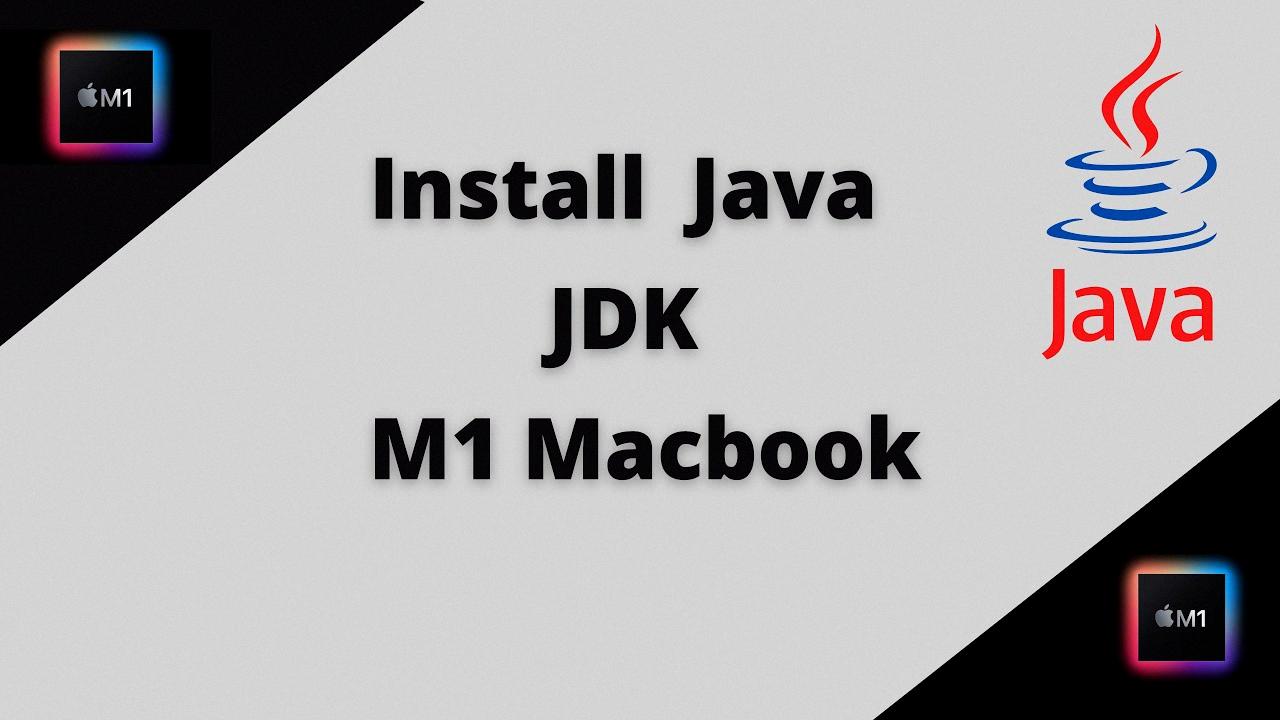
Source: youtube.com
Installing JDK on Mac
Yes, you can install JDK on Mac. Java Development Kit (JDK) is a software development environment used for developing Java applications and applets. It includes the Java Runtime Environment (JRE), an interpreter/loader (java), a compiler (javac), an archiver (jar), a documentation generator (javadoc) and other tools needed in Java development. Installing JDK on Mac is easy and straightforward. All you need to do is download the JDK from the Oracle website, open the .dmg file, and follow the instructions prvided by the installer. After installation, it’s important to set your JAVA_HOME environment variable to point to your JDK installation directory. Once everything is done, you can start writing and running your Java programs!
Installing the JDK on a Mac
The JDK (Java Development Kit) is installed in the /Library/Java/JavaVirtualMachines/jdk-10.jdk/Contents/Home directory on Mac. This is the root directory of the JDK software installation and it contains copyright, README, and src information aout the software. The JDK is necessary for developing Java applications and applets, as it contains the Java compiler, interpreter, libraries, and other components needed for Java development. With the JDK installed on Mac, developers can create a wide variety of programs using the Java programming language.
Installing JDK 1.8 on Mac
JDK 1.8 can be installed on Mac by following these steps:
1. Go to the Oracle website and scroll down until you see a heading beginning “Java SE 8u65/8u66”.
2. On the right, click the Download button under the JDK header.
3. Open your Downloads folder and double-click on jdk-8u65-macosx-x64.
4. Double-click on the package icon and follow the instructions to install it.
Checking If JDK Is Installed on Mac
If you are using a MacOS, you can check to see if the JDK (Java Development Kit) is installed by opening the Terminal application and running the command: java -version. If Java is installed, the command will output the version of Java that is currenty installed. If it is not installed, it will return an error message. Additionally, if you have already installed JDK on your MacOS, you can find it in the Applications folder under Oracle-> Java -> JDK.
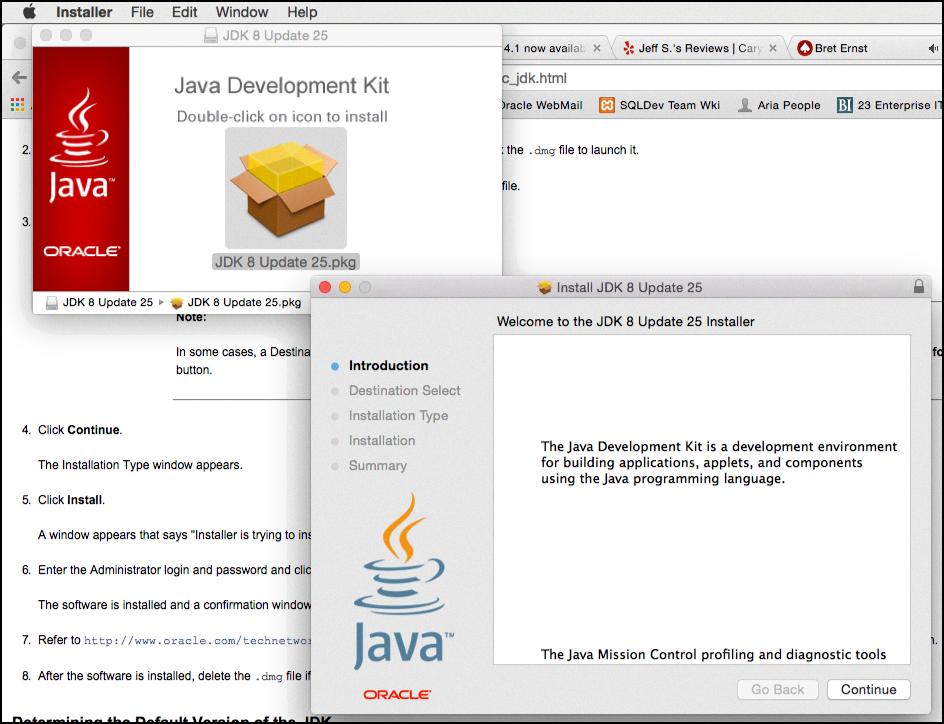
Source: thatjeffsmith.com
Installing Java JDK
To install Java JDK, you will need to download the latest version from the official Oracle website. Once you have downloaded the installer, double-click it to start the installation process. Follow the instructions provided by the installer to complete the installation. After the installation is complete, it is important to delete the downloaded file to recover disk space.
Downloading Java JDK
To download Java JDK, first navigate to the Java SE Downloads page at https://www.oracle.com/java/technologies/javase-downloads.html. Once there, choose the appropriate JDK Download for your operating system and click the “Download” button. You may need to agree to terms and conditions before downloading the software. Once downloaded, open the .exe file and run the installation, accepting all of the default settings. After that, you should have successfully installed Java JDK on your system!
Checking if JDK is Installed
To check if the JDK (Java Development Kit) is installed on your computer, open the command prompt and enter “java -version”. If a version number is displayed, then you have the JDK installed. Additionally, you can check for the presence of a “bin” folder in the installation directory of Java. This folder contains all of the tools necessary for developing Java applications, such as javac, javadoc, and jar. If both of these conditions are met, then you have the JDK installed and ready to use!
Finding the JDK Path
To find your JDK path on Windows, you can start by opening the Start menu and navigating to Computer > System Properties. Once there, select Advanced System Properties and open the Advanced tab. From this tab, you can access the Environment Variables section. Here, search for a system variable called JAVA_HOME which will provide you with the full path to your JDK folder.
Locating the JDK 11 Installation on Mac
Your JDK 11 is installed in the directory /Library/Java/JavaVirtualMachines/jdk-interim on your Mac. This directory contains seeral folders, each of which serves a different purpose. The bin folder contains the Java compiler (javac) and other tools necessary to develop and run Java programs. The jmods folder contains Java Modules, which are a collection of pre-compiled Java classes that can be used to create custom runtime images. The lib folder contains the core Java libraries needed to run Java applications. Finally, the release folder contains version information about the JDK 11 installation.
Location of Java JDK Installation
The Java Development Kit (JDK) is typically installed on a computer in the C:\Program Files\Java\jdk1 directory. The JDK contains tools necessary for developing and running Java applications, such as the Java compiler and runtime environment. It also includes libraries of classes and other resources necessary for developing Java programs, such as the standard Java class library. To use the JDK, you may need to set up environment variables, such as PATH, JAVA_HOME, or CLASSPATH.
Is Java 1.8 the Same as Java 8?
Yes, Java 1.8 and Java 8 are the same. The version numbers are simply dfferent ways of referring to the same release of the Java Development Kit (JDK).
The version number “1.8” is sometimes referred to as a “developer version number”, or an “internal version number”. This is because it indicates the sequence of major Java releases – in this case, it is the first major release after JDK 1.7. On the other hand, “Java 8” usually refers to the product version number, which is a more user-friendly way of indicating what software you are using.
In short, no matter which version number you use – either 1.8 or 8 – you will be referring to the same product: JDK 8.
What is the Java Development Kit (JDK) for Mac?
A Java SE Development Kit (JDK) for Mac is a subset of tools used to develop applications uing the Java programming language. It includes the Java Runtime Environment (JRE), a set of libraries, development tools, and other components necessary to compile and run Java applications. The JDK has been designed to work on MacOS systems, making it an ideal choice for developing projects and applications on this platform. To install the JDK on your Mac, simply navigate to the Java SE Downloads page, agree to the terms and download the version for Mac OS X. Once installed you can use the included tools and libraries to create powerful Java applications with ease.
Installing Java on a Mac
Getting Java on your Mac is an easy process! First, you’ll need to download the jre-8u65-macosx-x64.pkg file from the Oracle website. Once it’s downloaded, double-click the .pkg file to launch it and then double-click on the package icon to launch the install wizard. The Install Wizard will then show you the Welcome to Java installation screen. From here, follow the instructions on screen and click throuh until you get to the end of the installation process. Once completed, you should have successfully installed Java on your Mac! Oracle also has partnered with companies that offer various products related to Java so if you’re interested in exploring more options, take a look at their website for further details.
Which JDK is Best for Me?
The answer to the question “Which JDK should I use?” really depends on your specific requirements and environment. Generally speaking, if you need the highest level of stability, then you should stick to Java 8. This version has had several years of bug fixes and performance improvements, so it’s a great choice for projects that require extra stability. On the other hand, if you want to take advantage of the latest features and performance improvements, then consider upgrading to Java 13/14. These versions include a host of new features such as enhanced support for lambda expressions and garbage collector optimizations that can improve performance significantly. Ultimately, it’s up to you to decide whch version is best suited to your project.
Is Java JDK Free?
Yes, Java JDK is free for most users. Oracle JDK 8 and Oracle JDK 11 are both free to use for personal, development, educational, and other uses. From Oracle JDK 17 onwards, the software can be used under a special no-fee license by all users. This license removes restrictions on the use of the Java Development Kit (JDK).
Additionally, there are several open-source implementations of Java such as OpenJDK and AdoptOpenJDK which are available for free download and usage. These open-source implementations are provided without any warranty or support from Oracle.
The Use of JDK in Java
The Java Development Kit (JDK) is an essential part of developing programs in Java. It provides the necessry tools, libraries, and resources for writing and running code written in the Java programming language. With the JDK, you can compile, debug, and execute your code on any platform where a Java Virtual Machine (JVM) is present. The JDK also includes a variety of other tools that help make development easier and more efficient, such as an Integrated Development Environment (IDE), a debugger, a profiler, and more. Furthermore, it enables developers to write code that is platform-independent, meaning it can run on any system with a JVM installed. In summary, the JDK is an invaluable tool for creating robust applications with the Java programming language.
Installing 64-Bit JDK
Installing 64 bit JDK is a straightforward process. To begin, download the latest version of the JDK from Oracle’s Java SE Downloads page. Once the download is completed, double-click on the jdk-6u-windows-x64.exe file to start the installation process. The installer will guide you through a series of steps, starting with accepting the license agreement and selecting an installation directory. Upon completion of these steps, you may be asked to reboot your computer in order for the changes to take effect. After rebooting your computer, you should now have 64 bit JDK installed on your system.
Should I Install Both JDK and JRE?
No, you do not need to install both the JDK and JRE. The JDK includes the JRE, making it unnecessary to install them separately. However, if you need specific features from a newer version of the JRE than is included in the JDK, then you can download and install the JRE separately. To ensure that you are using the correct version of the JRE for your project, it is important to understand the version-string scheme used to differentiate beween releases of both JDK and JRE. For more information on this topic, please refer to Version-String Format.
Location of OpenJDK Installation
OpenJDK is installed in the directory that corresponds to the JAVA_HOME environment variable. Depending on your system, this directory may vary but it is typically /usr/lib/jvm/java-. This directory contains all of the necesary files and libraries for running OpenJDK. Additionally, if the default OpenJDK version has been set using the alternatives utility, then it will be located in a subdirectory of /usr/lib/jvm/.
Is JDK 1.8 Still Free?
Yes, JDK 1.8 is still free for personal use and development purposes since the Java 8 update at April 16, 2019 8u221. This version and all updates since then are free for these uses. If you plan to use JDK 1.8 for any other purpose you will need to purchase a Commercial License from Oracle.
If you are a developer or a user who only needs to use the Java Development Kit (JDK) for personal purposes then you can continue to do so for free without worrying about purchasing a license. However, if you intend on using the JDK for commercial purposes then it is important that you obtain the appropriate license from Oracle in order to be compliant with their terms of service.
Is JDK 8 Still Supported?
Yes, Oracle will continue to provide free public updates and auto updates of Java SE 8 indefinitely for Personal, Development, and other Users via java.com. This includes support for bug fixes and security patches. Java SE 8 is a legacy release and has gone through the End of Public Updates process, but Oracle continues to offer support for this version of Java to ensure users have the latest security updates and bug fixes.
Downloading JDK for Mac M1
If you are using a Mac computer with an M1 processor, then you sould download the latest version of the JDK available for Mac computers, which is jdk-16. This version of the JDK is optimized for use on Mac systems with an M1 processor, and offers improved performance and greater compatibility with macOS. To download jdk-16, simply visit the Oracle website, select the “Downloads” tab and select “Java SE Development Kit 16” to begin your download.
Conclusion
Installing the Java Development Kit (JDK) on a Mac is a straightforward process that can be completed in just a few steps. First, you will need to download the JDK from Oracle’s website and then install it. Once installed, you will need to configure your Mac’s environment variables so that the JDK can properly function. Finally, you will need to test that everything is working properly by writing and running a simple program. With these steps complete, your system will be ready to develop Java applications.










